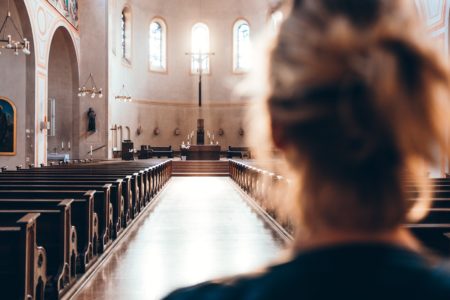By Peter Whitaker
The pandemic has turned our lives and society upside down and digitalised the Church, as we have had to gather online. These gatherings had an increase in attendees, which was a phenomenon experienced across the globe.
This has happened with concerns about online worship, not the least of which has been the celebration of Holy Communion. Some denominations have given temporary permission to celebrate Holy Communion online (UCA Assembly until March 2021); others have forbidden it. The implicit message is that our digital worship is an expedient measure and not equal to the physical community.
We call what happens online “virtual”. Our default assumption is that virtual is not quite real. When the word “virtual” is applied to digital communication, it means “not physically existing as such but made by software to appear to do so”. The question is whether “virtual reality” is authentic, a faithful resemblance, and accurate.
Today we have an amazing digitalised communication system, with real time images and verbal communication. Recently, our family celebrated a birthday meal on Zoom. We sat around our respective tables eating and talking to each other. This “virtual reality” we experienced could not be described as inauthentic, unfaithful, or unreliable. It was a genuine human encounter and experience. It allowed us to communicate in all respects except for smell and touch. To all intents and purposes, the digital meeting is as authentic and meaningful as the physical meeting.
Our concerns about online worship and Holy Communion are understandable. Hitherto, the physical gathering has been the only way we could come together and therefore we’ve assumed it is the only way.
This is not the first time the people of God have had to re-construct their concepts about real and genuine worship. In 587 BC, Israel was conquered, its city and temple razed and the people were deported to Babylon. This challenged the very core of their reality as the universal understanding was that one’s god resided in the temple. That’s where authentic worship only could take place. On the banks of the rivers of Babylon, they were given a new concept for worship – the Synagogue. When they gathered together to pray, read the Scriptures and reflect, they found God was as real to them as when they were in their Jerusalem temple.
Is our concept of “virtual reality” something entirely new? The first followers of Jesus had to contend with a new reality – the Resurrection of Christ Jesus. Through Jesus’s preparation of them and their experiences of the resurrected Christ, they came to a new understanding of the presence of Jesus. Christ Jesus was present and recognisable, but not present physically as before his death. John’s account of the Resurrection in the Upper Room is illustrative of this authentic yet virtual presence [Jn 20:19ff]. Whatever we wish to make of these Resurrection stories they powerfully speak to us of the fact that the post-crucifixion Jesus of Nazareth was experienced as the Christ through the means of what we might call a virtual reality.
It is uncomfortable for us to use technological language for our traditional theological language. But language is merely the vehicle that helps us understand the mystery of God in our experience. That is why we need to revisit our language and concepts in this “new time”. Deanna A Thompson argues in her book The Virtual Body of Christ that Paul’s concept of the body of Christ “does not always depend on face-to-face interaction, one that I am calling the virtual body of Christ”.
Technology bridges the tyrannies of isolation and distance. It is meeting pastoral needs in new ways that sustain faith, fellowship and celebration. It begs the question as to whether the future of Church lies both in physical reality and virtual reality. Our traditional theological understandings may be well served by reading them through the lens of virtual reality.
We should be wary of silencing conversations that challenge our valued past traditional understandings with these new concepts of reality. The balance between treasured traditions and new understandings will be challenging, but such conversations are necessary for the church of tomorrow.
Dianna Butler Bass, Church Historian, said that when previous pandemics have occurred the Church has had two major responses: a) to meet the needs of those in need; and b) the authorities of the Church have been challenged. The challenge has mainly been to the traditional ways of the Church!
Rev Peter C Whitaker is a retired minister



